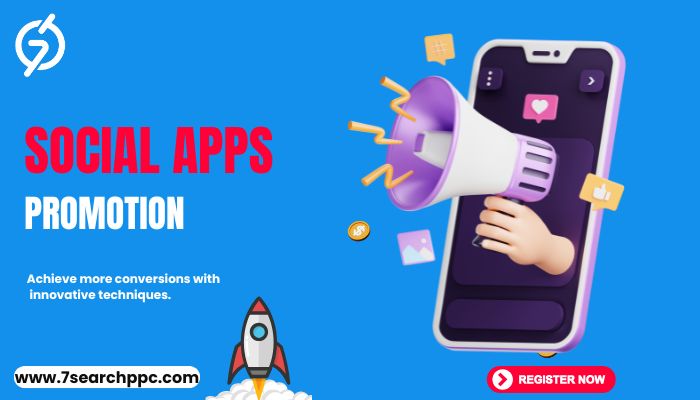Social apps have become an essential part of how people interact, connect, and engage online. For app developers and businesses looking to grow their user base, promoting social apps effectively is critical to success. Online advertising platforms provide numerous tools to help promote your social apps, utilizing formats like PPC (Pay-Per-Click), CPM (Cost Per Thousand Impressions), native ads, and banner ads.
Why Online Advertising Platforms Are Essential for Promote Your Social Apps
Online advertising platforms allow businesses to reach targeted audiences where they spend the most time on social networks and across various websites. Whether you’re using social ad networks or broader digital advertising strategies, these platforms help you engage with users who are most likely to download and use your social apps. Here are some key reasons why online advertising is so effective for promoting social apps:
- Targeted reach: You can specify the demographics, interests, and behaviors of your ideal users.
- Scalability: Online platforms allow you to reach millions of potential users globally.
- Measurable performance :Platforms provide analytics and tracking tools, allowing you to assess the performance of your campaigns in real-time.
Now, let’s dive into the specific strategies for promoting your social apps through various online advertising platforms.
Effective Strategies for Promoting Social Apps Using Online Advertising Platforms
When promoting social apps, businesses must focus on choosing the right online advertising strategies and platforms to attract the right users. Here are some key approaches that can help increase visibility and downloads.
Using Social Ad Networks to Reach Your Target Audience
Social ad networks are a powerful tool for promoting your social apps because they allow you to reach users who are already actively engaging with social platforms. Whether through Facebook, Instagram, TikTok, or Snapchat, social ad networks offer precise audience targeting, ensuring that your ads reach users most likely to download your app.
- Precise audience targeting: Social ad networks allow you to target users based on demographics such as age, location, interests, and behaviors.
- Ad formats variety: These platforms offer multiple ad formats, including video ads, carousel ads, and stories, to keep your campaign creative and engaging.
- Cost-effective options: Social networks typically offer cost-effective advertising models like PPC (pay-per-click) and CPM (cost per thousand impressions), giving you the flexibility to control your budget.
Best Practices for Running Ads on Social Ad Networks
To optimize your social app promotion campaigns on social ad networks, follow these best practices:
- Audience segmentation: Split your audience into smaller, more defined groups for more personalized messaging.
- Creative ad design: Use eye-catching visuals and clear calls to action (CTAs) to increase user engagement.
- Test and optimize: Run A/B tests on different ad formats, messaging, and targeting to determine what works best.
- Track performance: Use the analytics tools provided by social ad networks to monitor the performance of your campaigns and make adjustments as needed.
Leveraging PPC (Pay-Per-Click) Advertising to Drive Downloads
PPC advertising is one of the most popular methods for promoting social apps. This model allows you to only pay when a user clicks on your ad, making it a cost-effective way to drive traffic and downloads.
Benefits of PPC for Social App Promotion
- Budget control: PPC gives you full control over your spending, as you only pay when users engage with your ad.
- Immediate results: PPC campaigns often yield quick results, helping you gain visibility fast.
- Keyword targeting: You can target specific keywords related to your social app, ensuring that your ad reaches users with relevant search intent.
How to Set Up a Successful PPC Campaign
- Choose the right platform: Google Ads, Bing Ads, and social ad networks like Facebook and Instagram offer PPC options. Choose platforms that align with your target audience.
- Identify high-intent keywords: Focus on keywords that match user intent, such as “best social apps” or “new chat app.”
- Create compelling ads: Ensure your PPC ad copy highlights your app’s key benefits and includes a strong call to action, such as “Download Now.”
- Optimize landing pages: Ensure that users are directed to an optimized landing page that facilitates easy app downloads.
Using CPM (Cost Per Thousand Impressions) to Build Brand Awareness
CPM is an advertising model where you pay a fixed rate for every 1,000 ad impressions. This strategy is highly effective for raising awareness about your social app, particularly in its early stages.
Why CPM Works for Social Apps
- Wide reach: CPM campaigns allow you to reach a large number of users, making them ideal for increasing app visibility.
- Brand awareness: Even if users don’t click immediately, they are still exposed to your brand, which can lead to future engagement.
Best Practices for CPM Campaigns
- Target relevant audiences: Focus on showing your CPM ads to the right audiences by using detailed targeting options provided by ad networks.
- Create high-impact ads: Visual appeal is critical for CPM campaigns. Use bold, attention-grabbing visuals to make sure your ad stands out.
- Track performance: Monitor your CPM campaigns using the metrics available on the ad platform to see how many impressions are translating into clicks and conversions.
Leveraging Native Ads to Enhance User Experience
Native ads blend seamlessly into the content users are already viewing, making them less intrusive and more engaging. For social app promotion, native ads can provide a more organic way to introduce users to your app.
Why Native Ads Are Effective for Social App Promotion
- Non-disruptive: Native ads don’t interrupt the user experience, which leads to higher engagement rates.
- High engagement: Because native ads match the format of the platform, users are more likely to engage with them compared to traditional banner ads.
Creating Effective Native Ads for Social Apps
- Focus on storytelling: Use native ads to tell a compelling story about how your social app can enhance the user’s life.
- Use real-life scenarios: Showcase real use cases of your app to create relatable content for your audience.
- Maintain consistency: Ensure your native ad aligns with the overall look and feel of the platform on which it is running.
Increasing Visibility with Banner Ads
Banner ads are one of the most traditional forms of digital advertising but still offer value for social app promotion, especially when placed strategically on relevant websites and apps.
Benefits of Banner Ads for Social Apps
- Visibility: Banner ads are easily recognizable and can capture the user’s attention when designed well.
- Customizable sizes: You can tailor the size and shape of banner ads to fit various placements on websites or apps.
- Cost-effective: Banner ads can often be bought at reasonable rates on a CPM basis, helping you reach a wide audience without breaking the bank.
Tips for Designing High-Impact Banner Ads
- Keep it simple: Clear, concise messaging is key to ensuring users understand the value of your app at a glance.
- Use strong visuals: Include images or animations that represent the app’s features and user benefits.
- Include a clear call to action: Encourage users to take action with a direct call to action like “Install Now” or “Learn More.”
Measuring the Success of Your Social App Advertising Campaigns
It’s important to track and measure the success of your advertising campaigns to understand what’s working and where you need to improve. Online advertising platforms provide a range of analytics tools to help you monitor performance.
Key Metrics to Track
- Impressions: The number of times your ad is displayed to users.
- Click-through rate (CTR): The percentage of users who click on your ad after seeing it.
- Cost per install (CPI): The amount you pay for each app installation driven by your ads.
- Conversion rate: The percentage of users who download your app after clicking on your ad.
A/B Testing for Continuous Improvement
A/B testing involves running multiple versions of your ads to see which performs better. This is essential for optimizing your campaigns and ensuring you’re getting the best results.
- Test different ad formats: Compare the performance of native ads, banner ads, and PPC ads to see which yields better results.
- Experiment with visuals: Test different images, colors, and layouts to determine what resonates best with your audience.
- Tweak your messaging: Try different copy in your ads to see which wording drives the highest conversions.
Conclusion
In conclusion, promoting your social apps offers numerous opportunities to boost user engagement and grow your app’s user base. By leveraging a mix of social ad networks, PPC, CPM, native ads, and banner ads, you can create a comprehensive strategy that attracts users and keeps them engaged.
FAQs
What is the most effective ad format for promoting social apps?
Ans. Native ads are highly effective because they integrate seamlessly into the user experience, leading to higher engagement rates. However, PPC and CPM models also offer strong results when targeted correctly.
How much should I spend on promoting my social app?
Ans. Your budget will depend on your goals (e.g., downloads, visibility) and your chosen platforms. Start small with PPC or CPM campaigns and adjust based on performance metrics.
How do I track the success of my social app advertising campaigns?
Ans. Use analytics tools provided by the ad platform to track metrics like impressions, click-through rates, and app installs. A/B testing can also help you refine your campaigns.
What’s the difference between PPC and CPM?
Ans. PPC (Pay-Per-Click) charges you for each user click, while CPM (Cost Per Thousand Impressions) charges for every 1,000 impressions, regardless of clicks.



